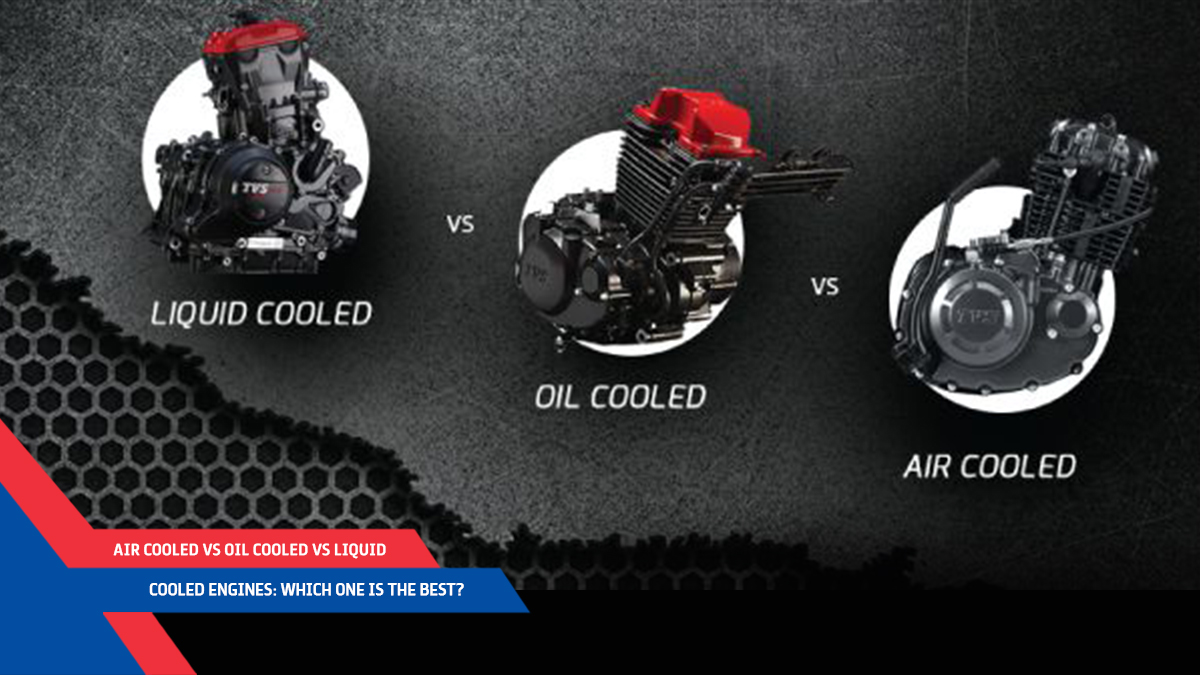Engines, as we know them, are not what they used to be. From the days of yore when these mechanical marvels used to be rather simple designs, their modern counterparts have become incredibly complex. From purely mechanical pushrod engines to modern hybrid powertrains where every moving part is controlled by a microchip, engine technology has come a long way. Two-wheeler engines, too, have progressed as quickly as their counterparts powering four wheels. In the Indian context, TVS Motor Company has been a pioneer in engine technology, by having created the first ever fully indigenous two-wheeler engine for the TVS Victor in 2001. This heralded a new era in the Indian two-wheeler industry and transformed two-wheeler production in the country, eventually making it the world’s largest two-wheeler market.
In this article, we’ll tell you how new generation engines are significantly different from their older equivalents, while also dispelling some untrue notions which people have about engines in general
Most modern engines are so precision-made, they don’t really need any breaking inYou would often hear you dad or granddad advising you to run your shiny new motorcycle carefully, below a certain engine rpm for extended periods of time. This was apparently to let the pistons and other moving parts settle in so that the shavings from the friction owing to the uneven machined surfaces inside the chamber didn’t cause any damage to the engine. The term used for the process was called ‘breaking in’ or ‘running in’ and even today you’ll find buyers of new motorcycles who would keep the engine revs well within 3000 rpm to ensure that it’s properly broken in.
Truth is, those were days when the engine components were not half as precisely made as they are today. Modern technology has enabled component manufacturers to create moving parts with incredibly low tolerances. This means that modern engines are built which such precision that their moving parts are already set in right from the time they’re assembled. Sure, a little caution before the first engine oil change is always advisable, but you don’t have to be paranoid about damaging your engine if you rev it a little harder than usual when it’s new. So enjoy your new motorcycle, without worrying about ending up with a seized engine.
Modern engines rev much higher and produce more powerModern engines can rev much higher than their older counterparts. A far departure from the times when engines would rattle as though they’d explode at 5000 rpm, today it’s not unusual to find an everyday motorcycle with an engine that spins all the way up to 12,000 rpm. Modern engines are built with advanced metal alloys which are lightweight, yet strong enough to take more pressure, stress and heat than their forebears.
TVS Motor Company’s very own Apache RTR 200 4V, for example, can scream its way all the way up to 11,000 rpm – delivering power and performance uncharacteristic of a 200cc machine. And yet, as you take that engine to those dizzying heights there won’t be any sounds of protest from the motor, as it is built to perform in the high rev range.
Modern engines are lightweightUnlike old engines which were made of cast iron, modern engines are made of specially processed aluminium and other special alloys. This saves weight in moving parts, which in turn allows them to move freely, and with less energy required. Not only does this enhances the fuel efficiency, it helps them produce significantly more power. The high-revving nature of an engine is also a reflection of the quality, lightness and strength of the moving components inside. You’d notice that high-performance engines used in motorsport are typically high revving, and they cost a bomb, as creating ultra-lightweight alloys which can still withstand all that abuse is an expensive affair.
Modern engines run cooler and are way more reliableChanges in engines design, better materials, better technologies to burn fuel, better heat dissipation, controlling the air-fuel mixture electronically and precision injectors mean that modern engines run way more efficiently, producing more power while also running cooler.
So while it was common for older motorcycles to heat up and cause trouble when ridden hard for long distances or durations, modern engines can run almost at their full potential for a sustained period of time. They hardly ever break on you and if you’re careful with the regular service and oil changes, they would run trouble free, sometimes for longer than the life of the motorcycle itself.
Modern engines prove that there indeed is a ‘replacement for displacement’
There’s this old adage that says ‘there’s no replacement for displacement’. The theory has been disproven by modern engines, which despite having a smaller cubic capacity outperform their bigger capacity older counterparts, sometimes by a factor of two, even three in some cases. New technologies like electronic fuel injections, lighter construction, exhaust gas recirculation, liquid cooling, more valves per cylinder and more cylinders even for smaller engines has increased the specific output of engines drastically. These smaller engines not just produce more power than their much bigger old-gen versions; they’re also more efficient and produce much less emission.
While not so common in motorcycles, forced induction technologies like turbocharging and supercharging have pushed the specific output of compact engines to a level which was simply unthinkable in earlier times.
So this was our list of how modern engines have progressed over the motors of yore. Do share your own list of advancements that modern engines boast of. You can share your views through the comments section below or mention our official handles on any of the social networks. We look forward to hearing from you.



Comments (10)
9886643450
02 Apr 2023
9886643450
02 Apr 2023
katana
02 May 2023
katana
02 May 2023
katana
24 May 2023
katana
07 Jun 2023
katana
07 Jun 2023
katana
14 Jun 2023
Oaaf
29 Jun 2023
mWOt
Oaaf
29 Jun 2023
mWOt